Message In The Melody
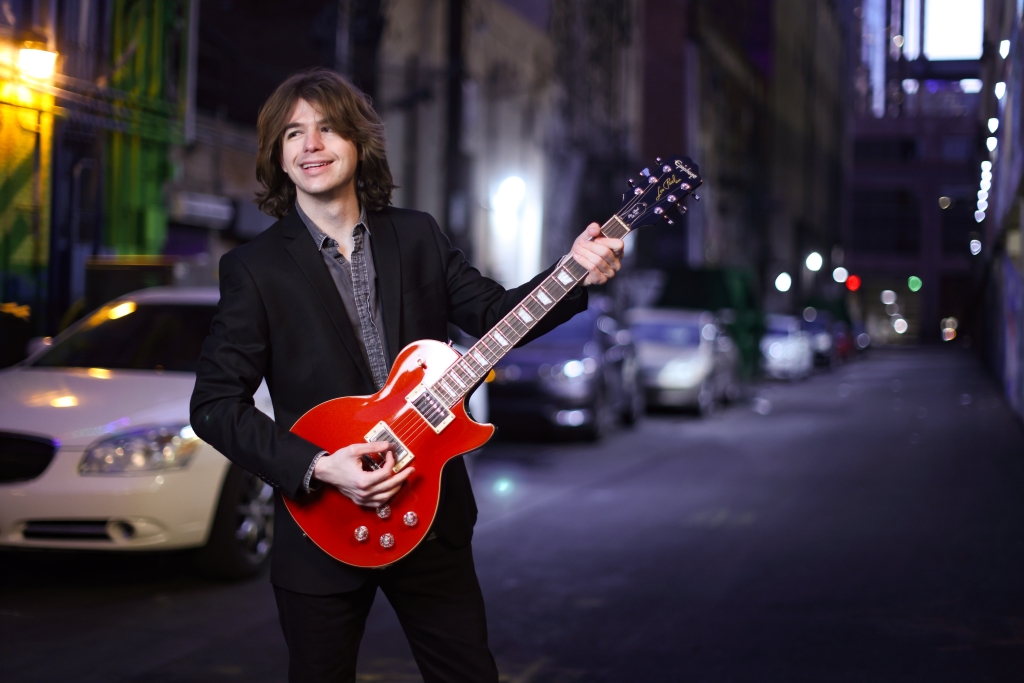
Writer Shannon Severson // Photography by Loralei Lazurek
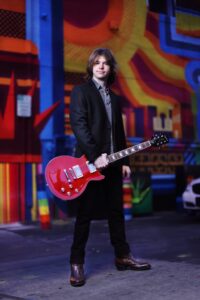


If a picture can be worth a thousand words, is the same true for a song without lyrics? The music of BARANS answers the question with a resounding “yes.” BARANS creates cinematic instrumental rock as “songs for your human experience.”
The mind behind it all is Joe Barans, a 23-year-old Grand Canyon University graduate who appears younger than his years but whose vision isn’t confined by time or convention. The Anthem native first picked up a guitar at age 12 and almost immediately began playing in bands, learning stage presence, how to function in a group and how to engage a crowd.
“I [immediately] felt comfortable on stage,” he reveals. “I didn’t have stage fright. All I cared about were songs. I didn’t need to play solos; I did, but I joined the Rhapsody Music band program early because it was always about songs. Learning [songs] was my form of practice.”
Barans resonates with a description ABBA used for their music — as “a highlight reel of parts” — and says the key word is variety. That thirst for variety and talent in assembling songs is captivating audiences around Phoenix, Las Vegas and San Diego who are drawn to his live, three-hour nonstop BARANS shows, where he is often accompanied by drummer Jonathan Bresar. They’ve been a band in demand and played 43 shows in 2023.
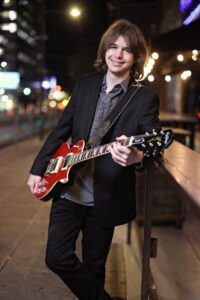


The Power of a Melody
With the attention span of tech-addled minds not being what it used to be, BARANS harnesses the interest of listeners with a variety of instruments, tempo, sound effects, clips of spoken words and Joe’s infectious onstage energy.
“What I’ve found is that by not using lyrics, we’ve been able to connect with a very wide group of people,” Barans says. “We aren’t vocal, but we are not without a voice. It’s a very conscious and active appeal to [listeners].
“At [downtown Phoenix] First Friday, festivals and marketplaces, we’ve found that there is no language barrier [with our music], and a lot of people are drawn to that. It’s been this really great, almost immersive live experience, and we’re constantly working to evolve it. Our live shows are born out of asking, ‘What can we do? How can we work within constraints and how can we really show the power of a melody?’”
As music is often storytelling, one may believe it is too difficult to get a message across without the use of words, but consider the long, rich history of classical music, and now, in contemporary times, the way a musical score influences the feel and message of every scene in a movie. BARANS’ music sets the table and allows listeners of all ages, languages and cultural backgrounds to approach and begin to imagine their own stories, inserting their own experiences and moods into a meaningful individual and collective moment.
“People will interpret your music their own way, with or without words,” Barans says. “Mine is a blank canvas.”
Live performances begin with a medley of cover songs — references that every listener can relate to — and then a found audio clip of actor John Cleese breaks through the music to say, “And now for something completely different,” and the show unfolds like a movie one can hear instead of see. One sound and song flows into the next. Backing tracks allow Barans to interact with the crowd and take an occasional water break.
“The parts are always new,” he says. “The song goes in different directions. There’s all this stuff going on that doesn’t let attention wander. It’s all about the show. We’re hitting them with a lot of different elements: an old Walmart ad, a track of thunder rumbling, the drums and music. I’ve seen people spend 30–45 minutes when they were planning to go have drinks with friends but they choose to listen to us.”
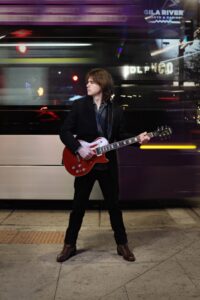


Sound Scrapbook
As BARANS’ songs are the sum of many parts, Barans not only composes new music but also relies on technology to create, search for royalty-free sounds and utilize his own archives for inspiration and material.
“I have well over 1,000 audio files of things I’ve written,” he explains. “I use them for samples, go back and relearn or switch melodies. Nothing is too sacred to go back and see what can be made better.”
In addition to guitar, Barans plays keyboard, banjo, mandolin and ukulele — an instrument that he sometimes brings out during live performances. To build these cinematic scores and have a full, layered sound during live shows, he uses Logic, a premier professional digital audio workstation system.
Another tool he uses is Spitfire Audio, a London company that produces sounds for keyboards that are exact tracks of particular instruments — such as a Stradivarius violin, the piano in the Abbey Road Studio where the Beatles recorded or the sound of an entire orchestra.
He begins with guitar and drums and then decides what else the song needs from his own recordings, clips from the public domain or natural sounds that he has recorded on his own. He adds separate tracks with metronome-style timing “clicks” and voice cues to be used by his drummer during live performances.
All these elements combine to make a demo that eventually becomes the finished backing track for his live performances. Barans coordinates each track with sounds that link the end of one song to the beginning of the next. Every piece of the experience is carefully planned to engage the audience and draw them in.
“At an event like First Friday, I had to learn to work a crowd,” Barans says. “No one is there to see you. You have to convince them to take 10 minutes to sort of take us in. I feel the responsibility to earn people’s attention. It’s something to be respected and earned. We work with the challenge of people’s short attention spans and we’ve been invited back regularly for the past year, which is highly unusual [to be invited again and again].”
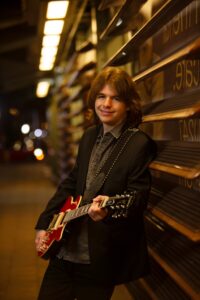


Icons and Influence
Actively seeking out and listening to all kinds of music and watching films is another part of Barans’ creative process.
“I’m always seeking out things I haven’t heard,” he says. “It’s research, as much a part of the process as writing, playing or recording. You won’t write music if you don’t listen to it or make a film if you don’t watch movies. I always want to find new paths. It’s like refueling, and then I’ll go and interpret it.”
Currently, he’s intrigued by world music, with a focus on bossa nova. He’s been immersing himself in Bach and Rachmaninoff in the classical sphere.
“Classical can be [considered] monolithic, but it’s not,” Barans observes. “I consider what I like in film scores by composers like Ennio Morricone, John Williams, Alfred Newman and Max Steiner and listen for those elements in classical music. For example, Sting enjoys listening to Bach. Whoever I like, I find out who they listen to. That’s how I have crept into classical more and how I can look into that style.”
Among his rock influences are the Beatles, Pink Floyd and Prince — artists who were not afraid to experiment, couldn’t be confined to one “box,” and greatly focused on putting on a fantastic show.
“There’s a quote I like by [bestselling author] Austin Kleon,” Barans recalls. “He says, ‘You don’t want to look like your heroes; you want to see like your heroes.’ I like how the Beatles saw things. They weren’t afraid to experiment. They put ‘Helter Skelter’ and ‘Rocky Raccoon’ on the same album. I want to see and approach things in the same way. When we perform, I dress all in black. It’s more about the show and the music.”
As much as Barans is laser-focused on performance, his persona is sincere, authentic and humble. He consistently credits those who’ve helped him in the past — his first guitar teacher, Ray Goodwin, and the director of his first band program, Jonathan Nilsen — and today — the folks at Roosevelt Row Community Development Corp. and Las Vegas oddities shop owners Chris and Erin Kmit. Barans expresses gratitude for the opportunities he’s had to perform and for the audiences who listen for a short time or the entire time.
“I always say thanks for listening,” he says. “We don’t charge people or do ticketed events, but people have been wonderfully generous to tip us. They choose to listen to us and I don’t want to charge them.”
Barans considers the audience his focus group, and his goal is to connect with people and to see people connecting with each other. BARANS’ instrumental music is that connector.
“I want to reach people, connect with people, reach the communities I perform in,” he explains. “Often in marketing, they say to find your niche. It’s not wrong, but what we’ve found is that we appeal to a lot of little groups — groups I wouldn’t have assumed would like [our music]. I’ve seen goth teenagers standing alongside retirees, all listening and engaged and interacting. I can make eye contact and see them smiling and I make that connection with them.
“We have enough division; music is bringing people together. With [lyricized] music, there may be something people don’t enjoy and so they stop listening. The message is lost. This is just a melody. I feel confident that my songs will live or die by the melody.”
BARANS can most often be found at Desert Ridge Marketplace, Tempe Marketplace and Roosevelt Row’s First Friday festivals.

